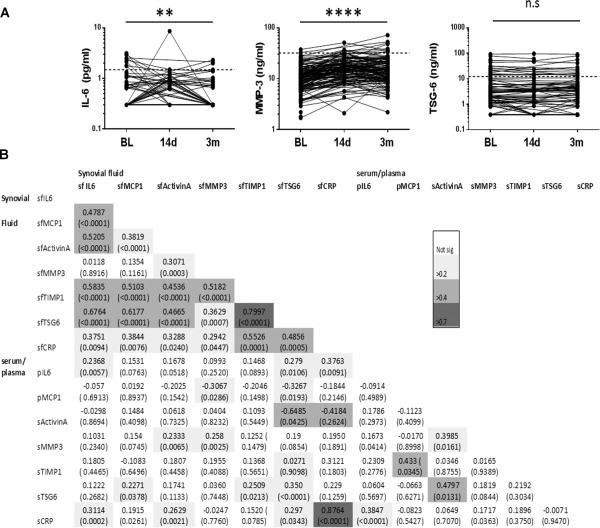Figure 2.

Change in analyte levels over time in the blood of KICK participants, and correlation between analyte levels in SF and blood. A, Blood samples, either plasma (IL‐6) or serum (MMP‐3 and TSG‐6), from individuals with knee injury were obtained at the baseline (BL) visit (within 8 weeks of injury), and 14 days and 3 months after the baseline visit and assayed for IL‐6, MMP‐3, and TSG‐6. Values for each individual are connected by a line. IL‐6 levels were below the lower limit of quantitation in 120 of 149 samples at baseline, 58 of 82 samples on day 14, and 104 of 120 samples at 3 months. TSG‐6 levels were below the lower limit of quantitation in 32 of 149 samples at baseline, 17 of 53 samples on day 14, and 19 of 120 samples at 3 months. Broken lines represent the calculated upper limit of normal for each analyte. The significance of the difference over time for each log‐transformed analyte level was tested by repeated‐measures analysis of variance. ∗∗ = P < 0.01; ∗∗∗∗ = P < 0.0001. NS = not significant. B, Correlations between analyte levels in SF, serum (s), and plasma (p), were determined by performing nonparametric Spearman's rank test on nontransformed data. All available participant data from the baseline visit were analyzed. Values are Spearman's R coefficient with P values in parentheses. Shading indicates the strength of correlation. CRP = C‐reactive protein (see Figure 1 for other definitions).
